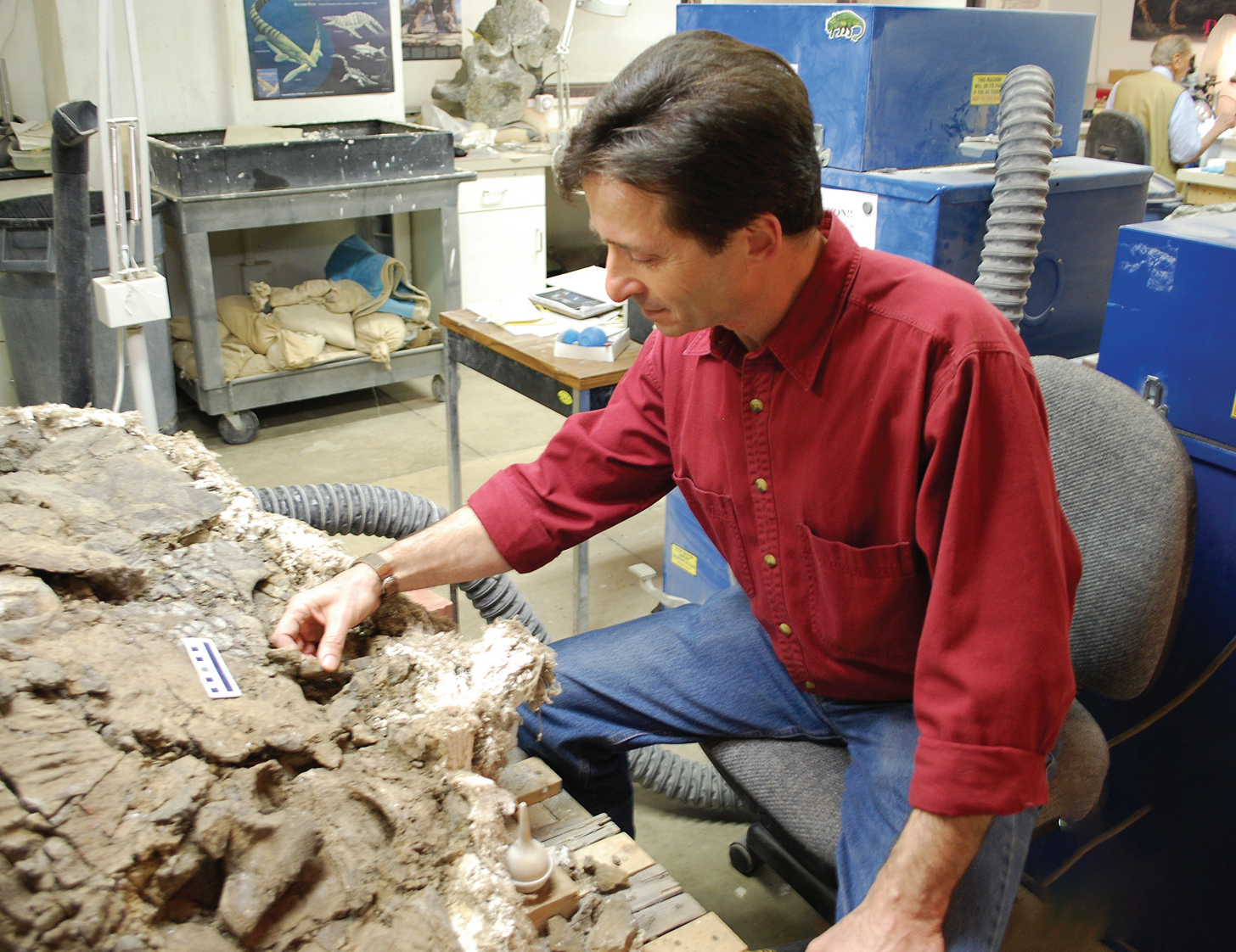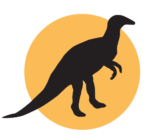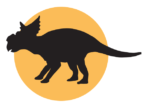
What researchers found in Alaska may surprise you.
[By Barb Cooper]
Alaska’s North Slope is the epitome of unwelcoming terrain. From the Brooks Range northward to the coastline, the coastal tundra has a harsh, bitterly cold climate, and lies atop permanently frozen soil. It is remote and forbidding; inhospitable and potentially deadly.
But 75 million years ago, during the Late Cretaceous period, Alaska was a very different place. Mountain ranges were just beginning to form and there was a bridge of land across what is today the Bering Strait. It was warmer; plant fossils and other indicators show the climate similar to that of southern Canada or the northern edge of the Lower 48 states. Even the stars that shone over Alaska were unusual. And the animals were different, as well.
Alaska isn’t the first place most of us think of when we think of dinosaur fossil hunting, but large herds of dinosaurs lived here in a complex ecosystem scientists are only now beginning to understand. Recent discoveries of the fossilized bones and tracks of dinosaurs in the northern part of the state have been significant and are challenging everything scientists thought they knew about how dinosaurs lived and died millions of years ago.
And for paleontologist Tony Fiorillo, chief curator and director of research for the Museum of Nature and Science in Dallas, Alaska’s North Slope, even with the extreme climate found there today, is one of the most exciting places on earth. In fact, he says the entire state of Alaska is a “great big paleontological candy store.”

First Discoveries
Compared with elsewhere in the world, the discovery of dinosaurs in Alaska is fairly recent. In 1961, Robert L. Liscomb, a geologist for Shell Oil Co., found a handful of bones from a duck-billed dinosaur, Edmontosaurus, on the banks of the Colville River. These bones were extremely well preserved, and Liscomb sent them back to his office, intending to have them studied by a paleontologist. Unfortunately, Liscomb died the next year in a rockslide, so they sat in a Shell warehouse until the mid-1980s, when Shell was cleaning house. Shell then sent the bones to the United States Geological Survey, where they were brought to the attention of paleontologist Charles Repenning, who recognized them as dinosaur bones.
In the late 1980s, crews from the University of California Museum of Paleontology and the University of Alaska Museum headed back to the Colville River site, which came to be called the Liscomb Bed, turning up finds that hinted at the abundant remains of dinosaurs and other animals.
Fiorillo’s interest in high northern latitude dinosaur ecosystems led him to Alaska in 1998, and he has made research trips to Alaska every year since, most recently expanding the search into several of the state’s national parks. Today, he is one of the world’s leading paleontologists working on polar dinosaurs. And that group of dinosaurs is proving significant in the paleontological world.
“Finding polar dinosaurs was important because it provided whole new insights into the biology of dinosaurs,” said Hans-Dieter Sues, senior scientist and curator of vertebrate paleontology at the Smithsonian Institution. “The traditional view was that dinosaurs were all overgrown reptiles that lived under tropical conditions. When we found polar dinosaurs, however, it was driven home to everyone that dinosaurs could live and thrive under different climate conditions.
Northern Alaska’s 12 Known Dinosaurs
Twelve known dinosaur types have been found on the North Slope. All are about 68 million to 72 million years old and are from the Late Cretaceous period. (Source: Bureau of Land Management)

Hadrosaurs were large, plant-eating, duck-billed dinosaurs that walked on two legs:
1 – Edmontosaurus (Ed-MON-toh-SORE-us): 10 feet tall, more than 40 feet long, weighing up to 3 tons, noncrested, most common type known; teeth and more than 60 percent of its bones found in Alaska.
2 – Kritosaurus (KRITE-oh-SORE-us): around 10 feet tall, up to 30 feet long, weighing about 3 tons, noncrested; teeth found in Alaska.
3 – Lambeosaurid (LAMB-ee-oh-sore-id): crested but genus uncertain; can be more than 10 feet tall, up to 50 feet long, weighing more than 3 tons; teeth and upper jaw found in Alaska.
 Pachycephalosaurids (PAK-ee-sef-a-loe-SORE-ids) were relatively small, plant-eating dinosaurs that walked on two legs; notable for having thick domed skulls suggesting that some may have used them for head-butting or some other ritual combat. Recent studies indicate adaption for heat dissipation or loss:
Pachycephalosaurids (PAK-ee-sef-a-loe-SORE-ids) were relatively small, plant-eating dinosaurs that walked on two legs; notable for having thick domed skulls suggesting that some may have used them for head-butting or some other ritual combat. Recent studies indicate adaption for heat dissipation or loss:
4 – Pachycephalosaurus (PAK-ee-sef-a-loe-SORE-us): not more than 7 feet tall, 15 feet long, 300 pounds; species not known; egg-size skull fragment found in Alaska.
 Ceratopsians (SERRA-tops-ee-ns) were large, plant-eating, horned dinosaurs that walked on four legs:
Ceratopsians (SERRA-tops-ee-ns) were large, plant-eating, horned dinosaurs that walked on four legs:
5 – Pachyrhinosaurus (PAK-ee-RINE-oh-sore-us): 7 feet tall, 18 feet long, weighing up to 4 tons; partial upper skull frill, horn core and shoulder blade found in Alaska.
6 – Anchiceratops (AN-ki-serra-tops): up to seven feet tall, 16 to 20 feet long, weighing up to 4 tons, part of rear of skull found in Alaska.
